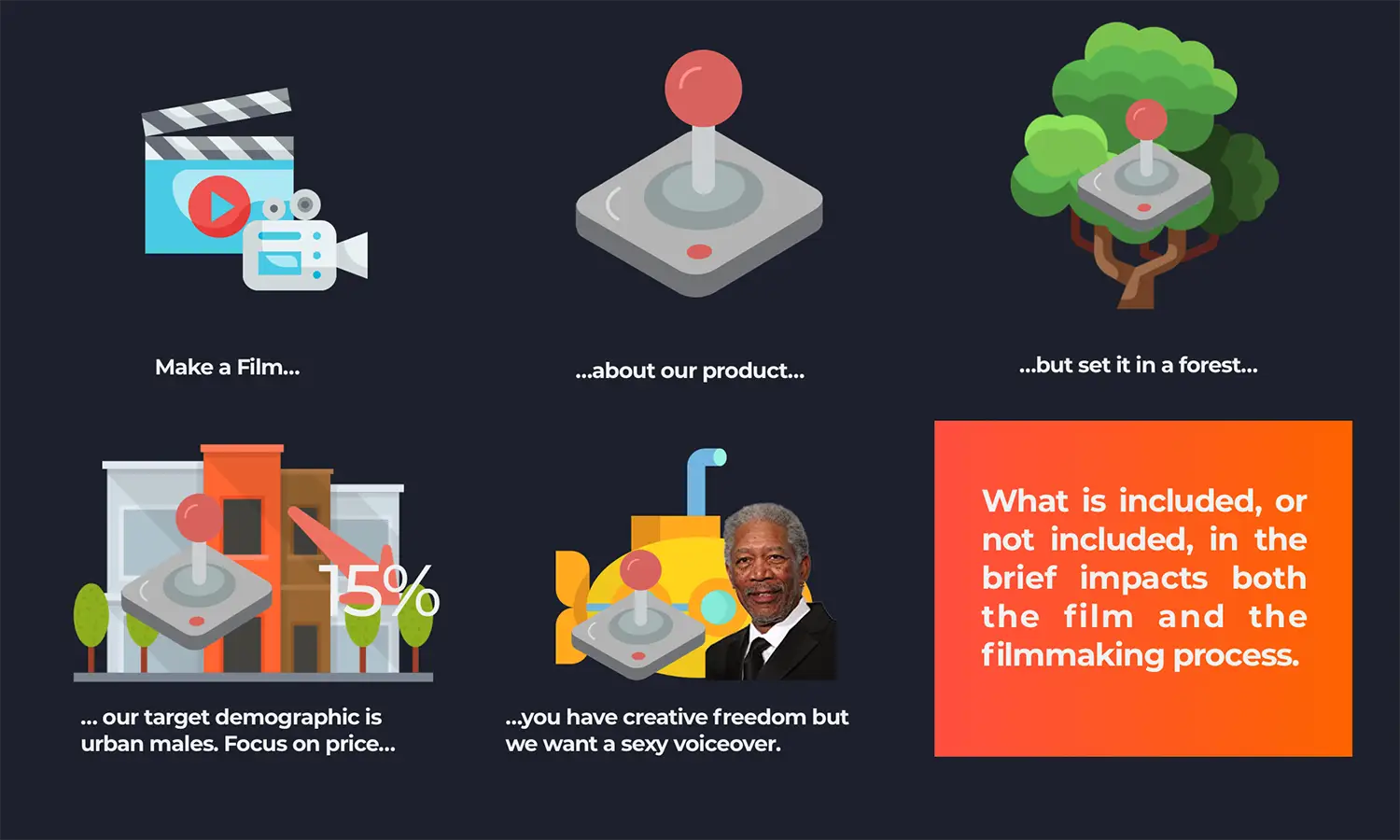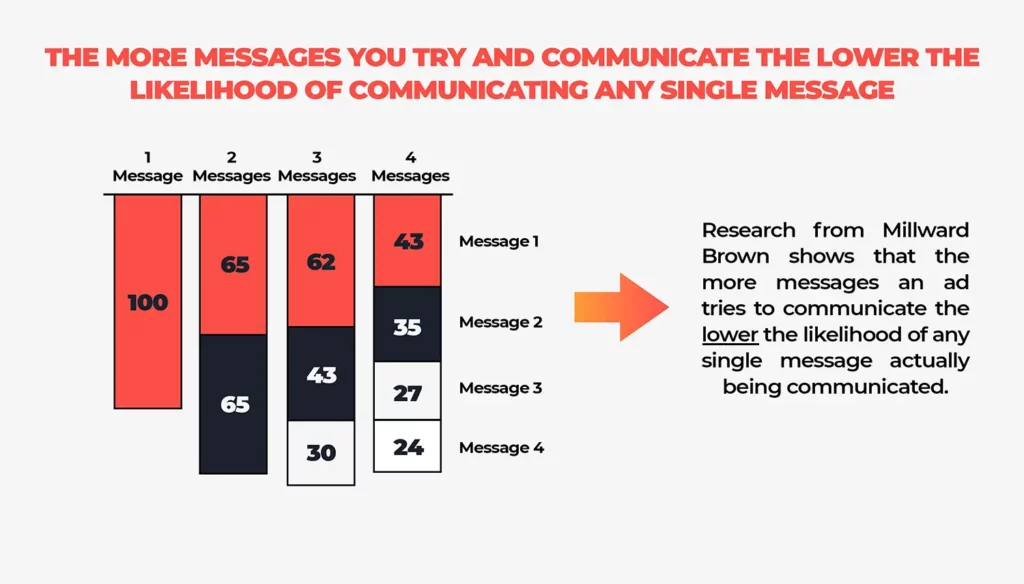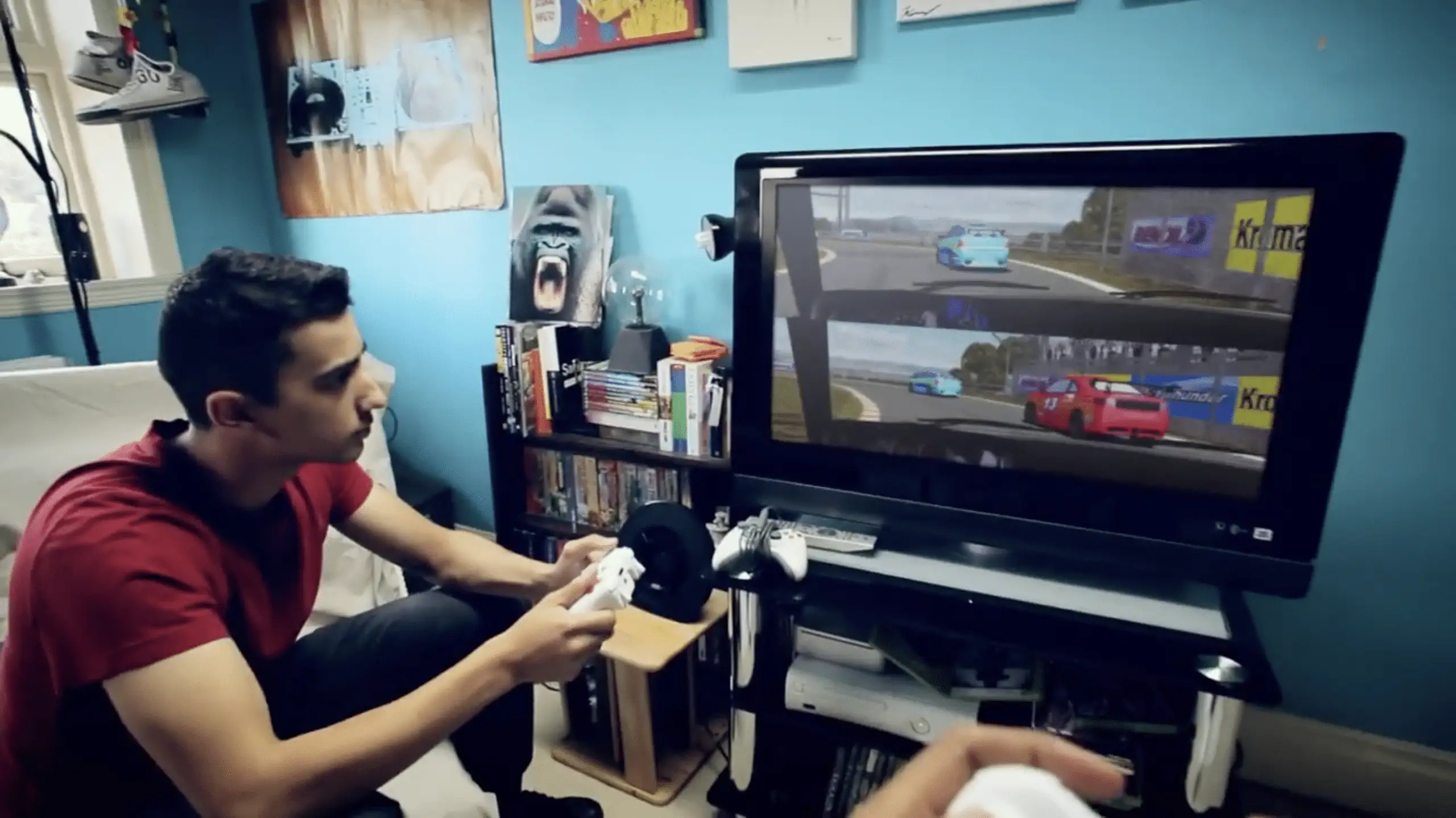Creative Video Production: The Definitive Guide



1. BE CLEAR IN THE BRIEF
What do we mean by creative video production? The guide below could be applied to any production but as a commercial and corporate video production company we figured this would be best for films used for business. So, TV commercials, promotional films, marketing videos, sales films or even training films. Any version of these requires a creative response.
If you’re interested to know why clients choose us for this kind of video production work then our Why Us page goes into detail about what makes us a good fit.

The diagram shows a bunch of different elements that could be included in a brief, all with varying levels of detail and usefulness. It’s possible that you, the client, commissioning some creative video production, won’t know where to start. But that’s fine. There’s no right answer about which one is the correct level of detail; too detailed and maybe you limit the opportunity for creative people to help. Not enough detail and you risk wasting time exploring dead ends. But you’ll be able to tell how good your chosen video production company is by how well they help you interrogate your own brief. They should be able to ask you solid, detailed questions about not just what your answers are, but why? At the end of this process will be a much clearer idea for you and the film production company about what you want to produce.
If you’re not sure where to start you can download this video briefing template you can download from here or complete this video brief online form. Our showreel video for sports agency SOTIC benefitted from a very clear brief, but still with room to manoeuvre creatively.
And if you’re still not sure then you wouldn’t be the first client who didn’t really know what they wanted until they saw what they didn’t want. That’s life but see point 7.
2. TRUST, BUT VERIFY
3. DON’T TRY AND DO TOO MUCH

The more you throw at the wall the less likely any of it is to stick. This is a tricky one for companies working at the lower end of the budget scale where any one video production is a big chunk of the annual marketing budget. But that should help crystallise the important messages.
But another dimension to this is that the number of outputs from any given video shoot has been on an upward trend for years. If a shoot has to provide content for the main creative idea, but also work on Twitter, and Instagram main reels and stories, then either you need to shoot more to accommodate it, or risk compromising the main shoot for a variety of reasons to ensure it works on multiple platforms.
A brilliant illustration of this principle is in our work with tech startup Sunswap. They had a pretty specific use case for their films but they had so much to say they divided their content into 17 different films to ensure each one was on topic and answered a very specific quesiton.
4. BE REALISTIC ABOUT BUDGET
That old saying “out of good, fast and cheap you can only have 2” is generally true for video production. If a company is willing to drop absolutely everything to make your project for a low budget, that should raise some eyebrows. Cost is a function of quality but it’s also a function of risk management.
The number of mission-critical tasks on a set stays roughly the same for many projects.
 Therefore the more people there are on a set means this list of critical tasks is divided between fewer people. That means they can concentrate on a smaller number of tasks and vital elements are less likely to get missed or go wrong.
Therefore the more people there are on a set means this list of critical tasks is divided between fewer people. That means they can concentrate on a smaller number of tasks and vital elements are less likely to get missed or go wrong.
The most common unit of production is the day. Shoots are x number of days long. If you don’t get it on the day it’s really hard to go back.
5. BE ORIGINAL, WE DARE YOU
The number of (allegedly) creative agencies that come to us and say “we really like this ad we’ve seen, can you do something like this but our budget is only this much” is a disappointingly big number. The end result is just never, ever as good.
But the stuff that is good, truly original is almost always like nothing else you’ve seen. It doesn’t have to be daring or edgy, just a good, fresh idea that’s relevant to your message.
Be clever, be brave and be new. And if you can’t, then let us. Some of our favourite and best work has always been when the client was open to something completely different. Our drinks advertising work for Cotswolds Distillery and our product videos for Samuel Heath are good examples where the client was open to original ideas.
6. BE FIRM BUT FLEXIBLE
The process of creative video production is such that occasionally creative ambition collides with hard reality. Any film crew worth their salt will tie themselves in pretzelly knots to achieve a client’s aim but often they’re fighting for a good idea for a good reason. Some creative friction can be good but there has to be some flexibility in both directions. Clients are hard to say no to, so it’s always good to know which parts are worth fighting for.
7. BUT BE NICE TOO
We’re nice, in fact most people are. It’s under-rated. This is going to sound all silly and woke but we believe that people work harder for nice people. It’s how we run our sets and why crew go the extra mile for us as a company. Film director David Fincher argues that creative tension is what makes his films so great. But his budgets are bigger. We find that most problems are caused by poor communication and resolved by good communication.
Ultimately, life’s too short to spend it working with unpleasant people.


